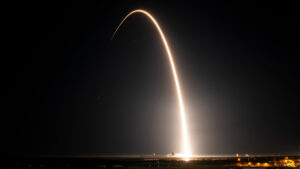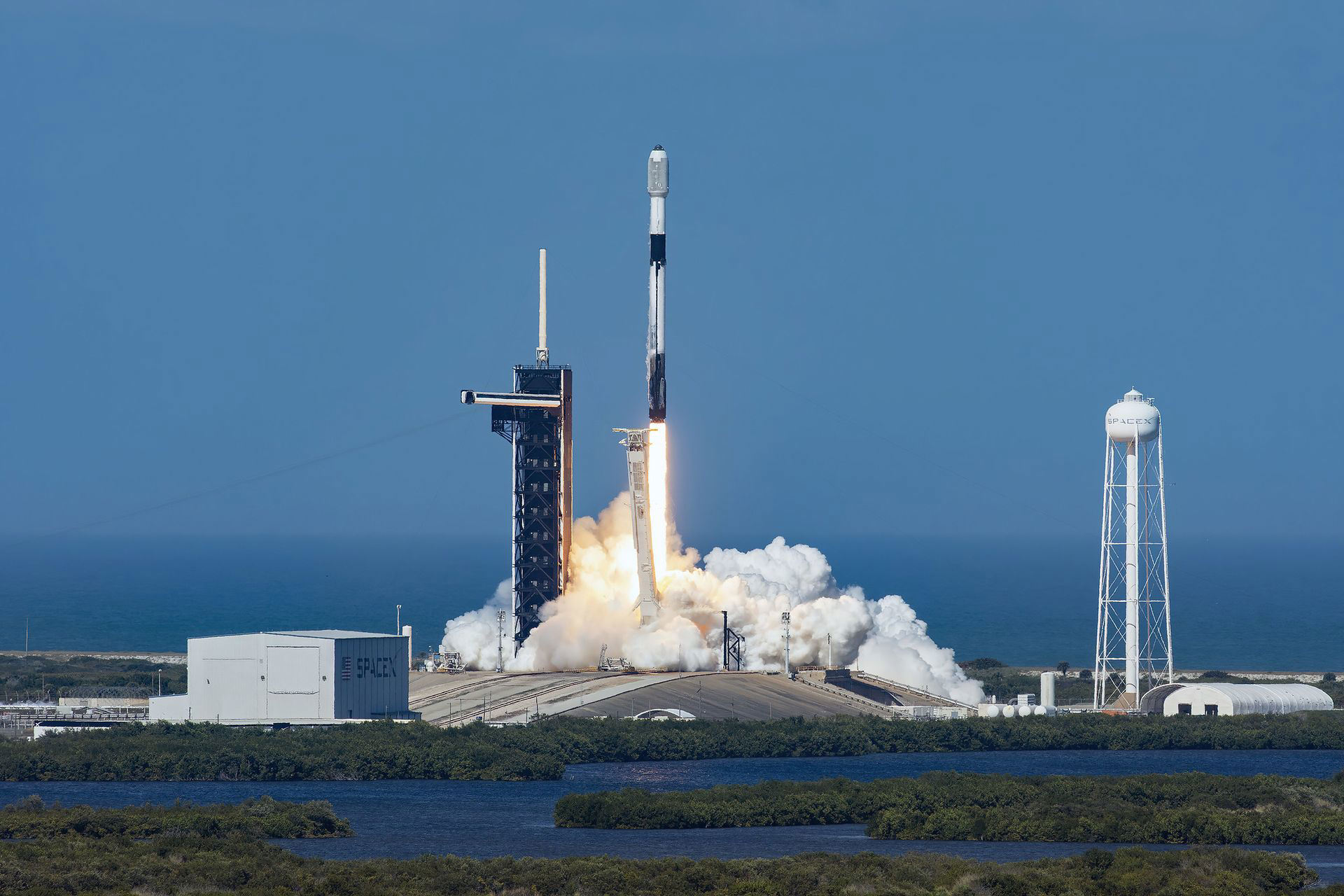SpaceX Falcon 9 Launches 22 Starlink Satellites from California
SpaceX successfully launched a Falcon 9 rocket from the West Coast with yet another batch of 22 Starlink satellites. The launch took place at 2:30 a.m. PST on Monday, targeting a specific orbit and marking the 55th Starlink delivery mission this year.
The Falcon 9 rocket, fueled once before, lifts off from Space Launch Complex 4E at Vandenberg Space Force Base in California. The rocket initially headed towards the southeast after liftoff, following a trajectory with an inclination of 53 degrees to the equator. The satellites target a specific orbit measuring approximately 183×178 miles (295×286 km). Notably, this launch was not without its setbacks.
On early Sunday morning, the Falcon 9 abruptly halts its countdown just minutes before liftoff. SpaceX later explained via social media that they were “standing down,” although no reason was provided for the aborted launch attempt. The mission, known as Starlink 7-7, had already experienced a one-day delay. The launch time had been rescheduled multiple times, ultimately aiming for the final launch opportunity of the night.

Reusable First Stage Booster Successfully Completes Its 15th Flight
The first stage booster of the Falcon 9 rocket, which completed its 15th flight during this mission, has an impressive flight history.
It currently launches various missions, including the Sentinel-6 Michael Freilich, DART, Transporter-7, Iridium OneWeb, Space Development Agency Tranche 0B, and nine ongoing Starlink delivery missions.
After the successful launch, the first stage booster begins its descent and achieves a precise landing on the drone ship named ‘Of Course I Still Love You.’ This autonomous ship is stationed approximately 400 miles downrange in the Pacific Ocean, just off the coast of Baja California.
Advancing Global Connectivity with Starlink
This latest batch of Starlink satellites is part of SpaceX’s ambitious plan to provide global internet coverage. By placing a large constellation of satellites in orbit, SpaceX aims to deliver high-speed internet access to even the most remote areas of the world. The company’s long-term goal is to have thousands of these small satellites providing seamless connectivity.
Each Starlink satellite weighs around 260 kilograms (570 pounds) and features advanced communication technology. With this mission’s successful launch, SpaceX continues making significant strides towards achieving its goal of revolutionizing internet access on a global scale.



